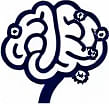Erikson's Stages of Development
 by Verner Mayer
by Verner Mayer
Erik Erikson's theory outlines eight stages of psychosocial development, each presenting key challenges from infancy through old age. This model helps explore personal growth, identity formation, and life transitions in a practical way for everyday learning and professional growth.

Erik Erikson's theory provides a framework for examining human development across the lifespan. This approach focuses on how individuals progress through various life phases, each marked by specific challenges and opportunities for growth.
In the first stage, trust versus mistrust, infants learn to rely on caregivers. This period sets the foundation for future relationships and emotional security. Trust becomes essential as it influences how people form connections later in life.
The second stage involves autonomy versus shame and doubt, typically occurring in toddlerhood. Children begin to assert their independence through small decisions and actions. Autonomy here means developing a sense of control, which can lead to confidence or self-doubt depending on support received.
Moving forward, the third stage is initiative versus guilt, seen in preschool years. Kids start to take on new roles and explore their environment with curiosity. Initiative allows them to plan and execute ideas, fostering creativity that carries into adulthood.
Around school age, the fourth stage emerges as industry versus inferiority. This is when children compare their abilities with peers and seek accomplishment in tasks. Industry refers to the drive to master skills, which can build self-esteem or lead to feelings of inadequacy.
Adolescence brings the fifth stage: identity versus role confusion. Teens grapple with questions about who they are and their place in society. Identity formation is crucial, as it shapes personal values and future decisions.
In early adulthood, the sixth stage is intimacy versus isolation. Individuals seek deep, meaningful relationships. Intimacy involves forming bonds that provide emotional support and companionship.
The seventh stage, occurring in middle adulthood, centers on generativity versus stagnation. People focus on contributing to the next generation through work or family. Generativity encourages productivity and a sense of purpose beyond oneself.
Finally, the eighth stage in late adulthood is integrity versus despair. Reflecting on life, individuals assess their experiences and achievements. Integrity represents a peaceful acceptance of one's life path.
Practical Applications in Daily Life
This model extends beyond psychology into areas like business and cognitive development. For professionals, recognizing these stages can improve team dynamics and leadership. In a work setting, understanding autonomy might help managers encourage employee independence, boosting innovation and morale.
In education, teachers can apply the concepts to support student growth. For instance, addressing industry in children helps build resilience and motivation in learning environments.
Parents and caregivers benefit by using this framework to guide child-rearing. By promoting initiative, they nurture problem-solving skills that last a lifetime.
Connections to Cognitive and Professional Growth
Erikson's ideas intersect with cognitive development by showing how emotional milestones affect thinking patterns. In business strategies, for example, leaders might use insights from identity to foster team cohesion and adapt to changes.
Consider how generativity plays a role in mentoring programs, where experienced professionals guide newcomers. This not only aids career progression but also enhances overall organizational culture.
For lifelong learners, reflecting on these stages offers tools for personal improvement. Tracking one's progress through them can reveal areas for development, such as enhancing intimacy in social interactions.
Why This Model Matters
By exploring Erikson's stages, individuals gain insights into their own journeys and those around them. This knowledge supports better decision-making and emotional well-being. In psychology, it provides a lens for therapy and self-reflection. For business, it informs strategies around employee engagement and leadership development.
Ultimately, applying this model encourages a balanced approach to life challenges. It reminds us that growth is ongoing, with each stage building on the last. Whether in personal or professional contexts, these ideas offer valuable perspectives for anyone seeking to understand human behavior more deeply.
